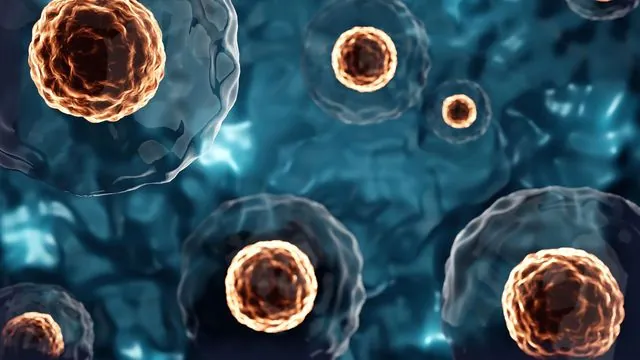
Breakthrough Discovery: Squeeze Your Way to Stronger Bones!
2025-07-08
Author: John Tan
Stem Cells Transformed by Tight Spaces
In a groundbreaking revelation that could revolutionize regenerative medicine and bone repair, researchers have uncovered that human stem cells are capable of transforming into bone cells simply by navigating through constricted spaces. This astonishing finding leads to exciting new possibilities for bioengineering, enabling us to influence cell behavior through physical means instead of relying solely on chemical signals.
The Pioneering Research Team
This pivotal study, spearheaded by Assistant Professor Andrew Holle from the National University of Singapore, highlights the significance of mechanics in cellular development. Published in the journal *Advanced Science* on May 8, 2025, the research focuses on how mesenchymal stem cells (MSCs) — which have remarkable potential to develop into bone, cartilage, and fat cells — react to physical constraints.
The Mechanics of Cell Transformation
To investigate the impact of physical forces, the team created a specialized microchannel system that replicates the narrow passageways throughout the body. Astonishingly, when MSCs were forced through channels measuring just three micrometers in width, they underwent permanent changes in both form and structure. Notably, the stem cells exhibited heightened activity in the RUNX2 gene, a critical player in bone formation, even after exiting these tiny channels. This suggests that they develop a kind of mechanical 'memory' that influences their future behavior.
A Simpler, Safer Alternative to Chemical Cues
Traditionally, stem cell differentiation has been steered by chemical cues or by culturing cells on various materials. However, Holle's findings could transform this approach. He proposes that using physical confinement to guide cell differentiation is not only simpler and more cost-effective, but also entails fewer risks—requiring merely a maze-like pathway for the cells to traverse.
Future Applications: Healing and Beyond
The implications of this research could span far beyond merely repairing bones. The scientists foresee a future where such confinement techniques could accelerate recovery from fractures and heighten the effectiveness of stem cell therapies. They express a keen interest in testing whether these 'preconditioned' cells enhance healing when applied to injury sites.
Broader Horizons: Cancer and Development
Interestingly, the potential benefits may extend to oncology as well. Given that MSCs naturally migrate towards tumors, the team is exploring whether mechanically preconditioned cells enhance movement through dense tumor tissues, a current hurdle for effective cell therapies. Furthermore, they intend to investigate this technique on more versatile stem cells — such as induced pluripotent stem cells (iPSCs) — which can develop into a wider array of tissue types.
The Bigger Picture: Engineering Our Future
Reflecting on the broader implications, Asst Prof Holle theorizes that the principles of confinement may even play a role in embryonic development. The idea is compelling: that mechanical stress during initial stages of development could guide cellular fate, offering a concept that transcends the realm of mesenchymal stem cells. This exciting frontier in cellular biology promises to unlock new pathways in medicine and healthcare.



 Brasil (PT)
Brasil (PT)
 Canada (EN)
Canada (EN)
 Chile (ES)
Chile (ES)
 Česko (CS)
Česko (CS)
 대한민국 (KO)
대한민국 (KO)
 España (ES)
España (ES)
 France (FR)
France (FR)
 Hong Kong (EN)
Hong Kong (EN)
 Italia (IT)
Italia (IT)
 日本 (JA)
日本 (JA)
 Magyarország (HU)
Magyarország (HU)
 Norge (NO)
Norge (NO)
 Polska (PL)
Polska (PL)
 Schweiz (DE)
Schweiz (DE)
 Singapore (EN)
Singapore (EN)
 Sverige (SV)
Sverige (SV)
 Suomi (FI)
Suomi (FI)
 Türkiye (TR)
Türkiye (TR)
 الإمارات العربية المتحدة (AR)
الإمارات العربية المتحدة (AR)